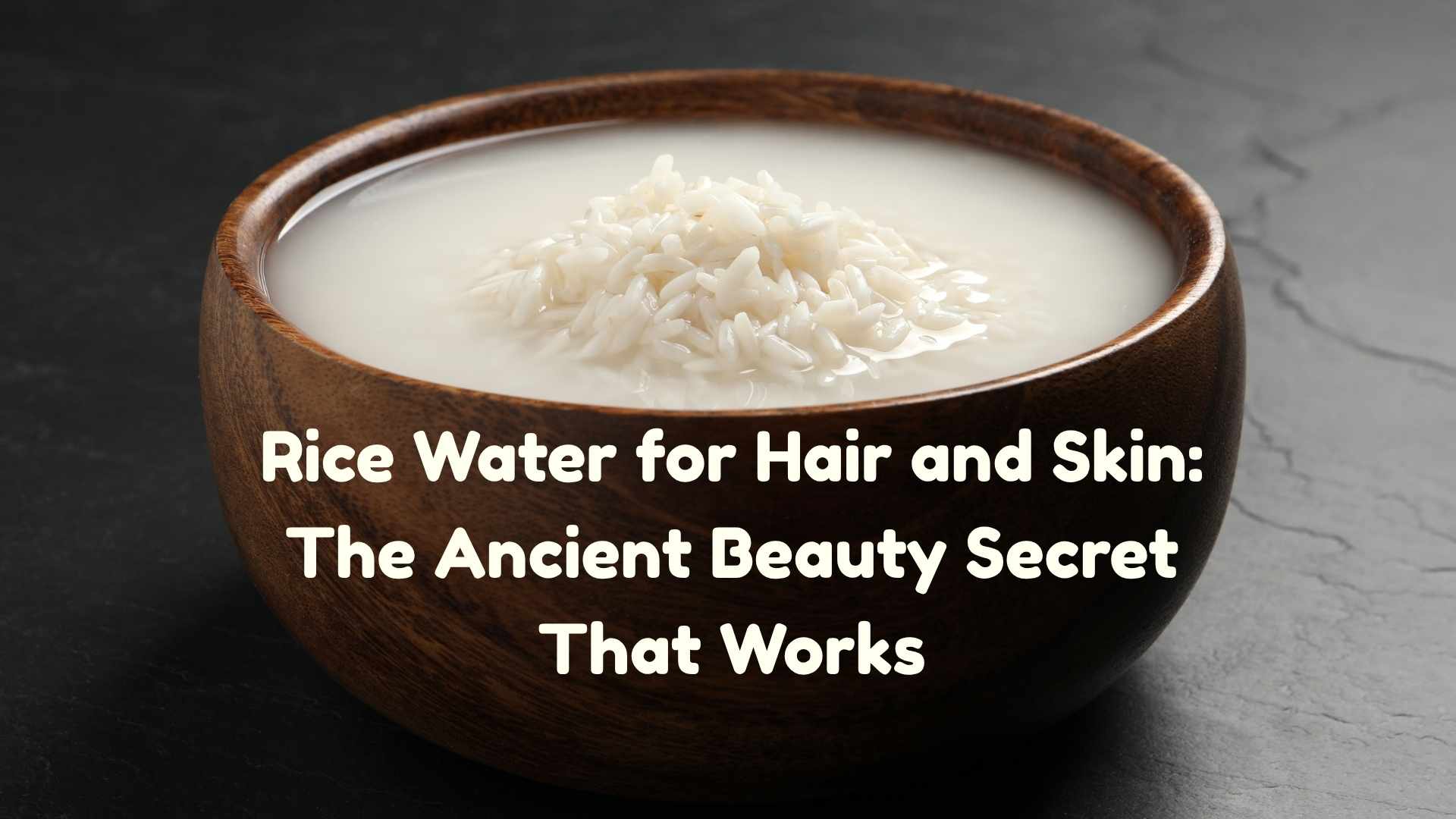Rice Water for Hair and Skin: The Ancient Beauty Secret That Works
For centuries, women in Asia have used rice water for hair and skin as a simple yet powerful beauty remedy. Packed with vitamins, minerals, and amino acids, this ancient elixir promotes hair growth, adds shine, and helps soothe and brighten the skin. In today’s world of chemical-filled products, rice water offers a natural and affordable alternative that truly works. Discover how this time-tested beauty secret can transform your hair and skin care routine.
What is Rice Water?
Rice water is the starchy liquid left behind after soaking or boiling rice. It’s packed with nutrients like:
- Vitamin B and E
- Amino acids
- Antioxidants
- Ferulic acid
- Inositol (a carbohydrate that promotes cell repair)
These ingredients are known to nourish, protect, and repair both skin and hair naturally.
Benefits of Rice Water for Hair
1. Promotes Hair Growth
Rice water stimulates the scalp and helps improve blood flow, which can lead to faster, healthier hair growth.
2. Adds Shine and Smoothness
Regular rinsing with rice water can reduce frizz and add natural shine, leaving your hair silky and manageable.
3. Strengthens Hair
Inositol in rice water strengthens hair from the roots and repairs damage caused by heat or styling tools.
4. Reduces Dandruff and Itchiness
Its soothing and antimicrobial properties help reduce scalp irritation and dandruff.
How to Use Rice Water for Hair
Step-by-step:
- Rinse 1/2 cup of rice to remove dirt.
- Soak it in 2-3 cups of water for 30 minutes or boil it for 10 minutes.
- Strain the water and let it cool.
- Pour it over your hair after shampooing.
- Leave it on for 10–20 minutes, then rinse thoroughly.
Use 1–2 times a week for best results.
Benefits of Rice Water for Skin
1. Brightens Complexion
Rice water contains natural skin brighteners that help reduce dark spots and improve overall skin tone.
2. Soothes Inflammation
Its cooling effect can calm irritated or sunburned skin, making it ideal for sensitive skin.
3. Hydrates and Tightens Skin
Acts as a natural toner that hydrates, firms, and smooths the skin for a youthful appearance.
4. Reduces Pores and Oil
Regular use helps shrink pores and control excess oil, making it great for acne-prone skin.
How to Use Rice Water for Skin
As a toner or rinse:
- Soak a cotton pad in cooled rice water and apply it gently to your face.
- Leave it on for 10–15 minutes before rinsing or let it air dry.
- Use daily or every other day.
As a face mist:
Store rice water in a spray bottle and mist your face throughout the day for instant hydration.
Must Read: Immune Boosting Natural Drinks
Types of Rice Water
- Plain Rice Water: Simple and fast—best for short-term use.
- Fermented Rice Water: Let the rice water sit for 24–48 hours to boost its antioxidants. Stronger and more effective.
- Boiled Rice Water: Great for dry hair and skin—has a thicker consistency and richer nutrients.
Storage and Shelf Life
- Store in a clean, airtight bottle.
- Keep refrigerated.
- Use within 5–7 days for best results.
Precautions
- Always patch test before using rice water.
- Don’t overuse, especially if you have dry hair or sensitive skin.
- If fermentation smell is too strong, dilute with water or essential oils.
Final Thoughts
Rice water for hair and skin is a time-tested, budget-friendly beauty secret. Packed with natural nutrients, it promotes hair growth, strengthens roots, and brings a healthy glow to your skin. Whether used as a rinse, toner, or mask, rice water is a simple and effective way to enhance your beauty routine—naturally.
FAQs
1. How do I make rice water at home for beauty use?
Soak ½ cup of uncooked rice in 1–2 cups of water for 30 minutes, stir well, then strain. Use the water for hair rinses or as a facial toner.
2. How often should I use rice water on my hair and skin?
For best results, use rice water on hair 1–2 times a week and on skin daily or every other day, depending on your skin type.
3. Can rice water cause any side effects?
Rice water is generally safe, but overuse can cause protein buildup on hair or dryness on sensitive skin. Always patch test first.








One Comment